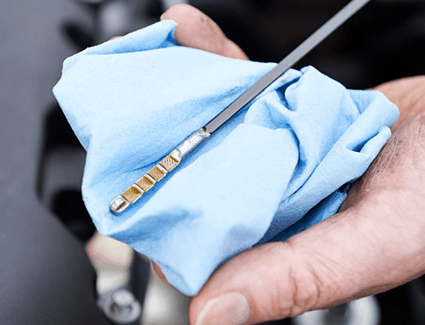

The oil pressure light in your Chevy is easy to spot: it looks a lot like a genie's lamp. Unfortunately, seeing this light in your dashboard is a lot less exciting than finding a real magic lamp. In fact, it means that the oil pressure in your engine is dangerously low, and will need immediate attention.
Of course, you should bring your Chevy to the dealership to have this problem addressed. But we also want you to have the information you need to make sure your Chevy is in good condition. Follow these three steps and you may just save yourself some money on repairs.

3. Stop Driving & Turn Off the Engine
If the oil light turns on in your car, the best thing to do is find a place where you can safely pull over. By "safely," we mean somewhere that is farther away from traffic than what the shoulder of the road typically provides, since you may have to get out of your car. Once you've found the place and pulled over, turn your car's engine off immediately.

2. Check the Oil Level
Low oil levels could be a cause of low oil pressure. Checking for low oil is easy. After you've turned off your car, remove the oil dipstick and wipe it off. Place it back into the reservoir, then remove it again. If the oil doesn't reach the fill line, low oil may be what's causing your problems. You can add more oil, but be sure to still bring your Chevy in for service so that our technicians can figure out what caused the low oil level.

1. Call for a Tow
If the oil level is fine, the problem may be caused by several things, from a damaged oil delivery system to a bad oil pressure sensor. But whatever the cause, the risk of driving an engine with low oil pressure is just to high. To avoid a hefty repair bill, we recommend calling a tow truck.
Contact
2855 Maple Ave Ne
2855 Maple Ave Ne
Salem, OR 97301
- Contact: (503) 877-2943

